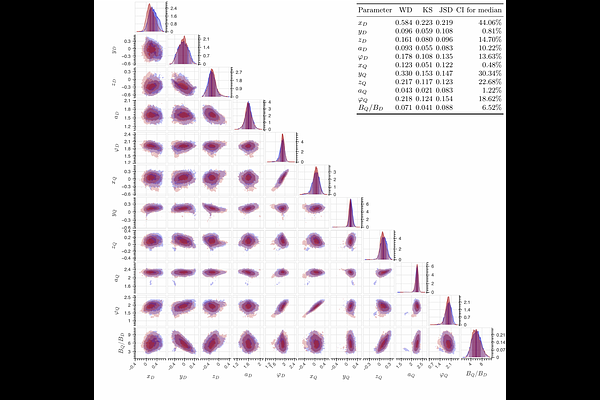Pioneering High-Speed Pulsar Parameter Estimation Using Convolutional Neural Networks

Pioneering High-Speed Pulsar Parameter Estimation Using Convolutional Neural Networks
Greg Olmschenk, Emily Broadbent, Constantinos Kalapotharakos, Wendy Wallace, Thibault Lechien, Zorawar Wadiasingh, Demosthenes Kazanas, Alice Harding
AbstractAccurate thermal emission models of neutron stars are essential for constraining the dense matter equation of state. However, incorporating realistic magnetic field structures is computationally prohibitive, severely constraining feasible parameter space exploration. In this work, we develop a NN emulator to generate model thermal bolometric X-ray light curves of millisecond pulsars with multipolar magnetic fields. We assess the NN's predictive and computational performance across a broad parameter space. We find that for a SVF model, the NN provides a >400 times speedup. We integrate this NN emulator into a MCMC framework to replace the computationally expensive physical model during parameter exploration. Applied to PSR J0030+0451, this approach allows the MCMC to reach equilibrium in ~1 day on 4000 cores, where with the original physical model alone it would have taken more than a year on the same hardware. We compare posterior distributions by running equivalent MCMC iterations with both the NN and the physical model, evaluate differences in distributions when continuing the physical model MCMC from the NN MCMC equilibrium state, and assess variations in posterior distributions resulting from NNs trained on datasets of different sizes. Our NN architecture is agnostic to the underlying physics of the physical model and can be trained for any other physical model, opening many avenues of analysis that were previously intractable. The NN speed remains the same regardless of the complexity of the physical model it was trained to emulate, allowing even greater speedups for physical models that are more complex than the SVF model.